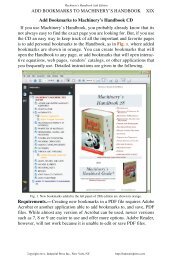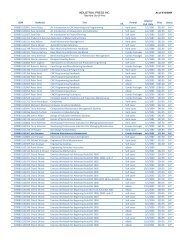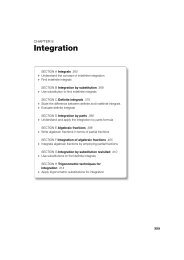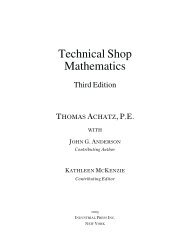computer numerical control programming basics - Industrial Press
computer numerical control programming basics - Industrial Press
computer numerical control programming basics - Industrial Press
Create successful ePaper yourself
Turn your PDF publications into a flip-book with our unique Google optimized e-Paper software.
Fig. 6 A workpiece dimensioned in the incremental system mode. (Icon Corporation)<br />
• A “X plus” (X+) command will cause the cutting tool to be<br />
located to the right of the last point.<br />
• A “X minus” (X-) command will cause the cutting tool to be located<br />
to the left of the last point.<br />
• A “Y plus” (Y+) command will cause the cutting tool to be<br />
located toward the column.<br />
• A “Y minus” (Y-) will cause the cutting tool to be located away<br />
from the column.<br />
• A “Z plus” (Z+) command will cause the cutting tool or spindle<br />
to move up or away from the workpiece.<br />
• A “Z minus” (Z-) moves the cutting tool down or into the workpiece.<br />
In incremental <strong>programming</strong>, the G91 command indicates to the<br />
<strong>computer</strong> and MCU (Machine Control Unit) that <strong>programming</strong> is in<br />
the incremental mode.<br />
Absolute program locations are always given from a single fixed<br />
zero or origin point (Fig. 7). The zero or origin point may be a<br />
position on the machine table, such as the corner of the worktable<br />
or at any specific point on the workpiece. In absolute dimensioning<br />
and <strong>programming</strong>, each point or location on the workpiece is given<br />
as a certain distance from the zero or reference point.<br />
12








